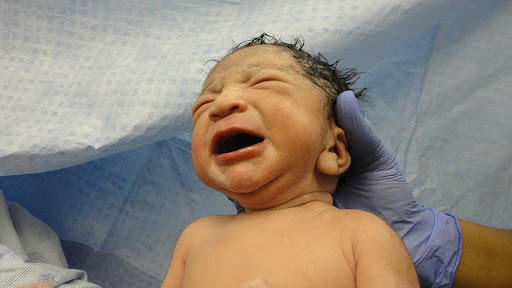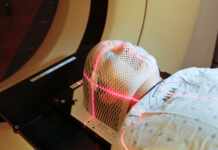Childbirth injury is the damage that can occur before, during, or after childbirth because of medical malpractice. The physical pressure applied on the baby’s head and shoulders through the birth canal can cause irreparable damage and lead to other medical complications. Meanwhile, minor injuries heal in a few days or weeks. Birth injuries can lead to head trauma, brain injury, or internal bleeding.
As per the Agency for Healthcare Research and Quality, the childbirth injury rate in 2013 was 1.9 per 1,000 live births, while 3.4% of the parents reported poor communication with the healthcare provider. About 7 out of 1,000 childbirth injuries occur in the United States. However, you can take steps to prevent that from happening and access resources to get help if it does happen.
- You Can Take Legal Action Against Preventable Birth Injuries
If your child suffered a birth injury such as cerebral palsy, Erb’s palsy, or another serious injury, you could take legal action against the parties involved. Your attorney can help you file a case against the healthcare professional responsible for your child’s birth injuries due to medical malpractice.
You can access resources at childbirthinjuries.com to understand your child’s condition and get medical and legal help by getting a free case review. It includes understanding the intensity and type of injuries and the steps you can take. You may be eligible to receive financial compensation for your child’s medical expenses.
The medical professionals analyzing your case identify the causes of malpractice during neonatal and postpartum care and determine the payout ratio relevant to the damage caused. Birth injury claims are categorized into 41% of claims for brain damage, 37% for shoulder injuries, and 34% for death or stillbirth. However, claims involving multiple injuries can fit into more than one category.
- Types of Birth Injuries
Each type of birth injury has different causes and symptoms. Here are some of them:
- Cerebral palsy refers to disorders affecting the brain’s control over the nervous system and muscles. The child will have difficulty coordinating muscle movement to maintain posture and balance. It occurs because of brain injury before or during birth. Although it may not get worse or better over time, but causes various health issues as the child grows up. However, you can help manage your child’s condition via therapy, medication, or surgery.
- Erb’s palsy affects the nerves in the neck leading to poor posture and arm paralysis. Seeing your child’s arm twisted backward with curled-up fingers could signify Erb’s palsy. However, physical therapy can help regain feeling and movement in the arm. The American Academy of Orthopedic Surgeons (AAOS) found that 1 out of 1,000 newborns suffer from Erb’s palsy in the US.
- Intrauterine fetal demise (IUFD) occurs when a child dies in utero during the second trimester in the 20th week of pregnancy. It is different from a miscarriage that happens before 20 weeks of pregnancy. It occurs because of infections and issues with the placenta or the umbilical cord. However, the failure of medical professionals to identify the risk factors comes under medical negligence.
- Other childbirth injuries include newborn jaundice caused by a bilirubin buildup, kernicterus, newborn cephalohematoma, spinal cord injury, and vacuum extraction injury.
- How to Identify Birth Injuries
Some common signs and symptoms of childbirth injuries make it possible to identify them. These may not be obvious immediately after birth, while some symptoms may not present themselves 1 to 2 years into the child’s life. However, some immediate symptoms of a birth injury can include the following:
- Difficulty in eating, swallowing, or suckling
- Arched back when crying or very high-pitched cry
- The hand stretched backward and curled into a claw
- Low heart rate and oxygen levels
- Stiff or loose muscles
- Weak reflexes
- Excessive drooling
- Sensitivity to light
- Skull fracture
- Seizure
As your child grows up, you can spot other symptoms when you notice late developmental milestones, such as walking and talking. It can be because of nerve or brain damage.
Once your child is one year old, the signs of birth injury can include the following:
- Deafness, muteness, or blindness
- Difficulty grasping utensils or other items
- Unable to sit, crawl or walk without assistance
- Muscle spasms
- Low memory retention
- Shakiness or tremors
- Loss of bodily movements or poor muscle coordination
A slow developmental cycle or lack of movement can signify birth injury. You must immediately contact your pediatrician if you notice any signs and symptoms.
- Birth Injury Diagnosis
The sooner you identify possible signs and symptoms of birth injuries and take your child to a medical professional, the sooner you will receive the diagnosis. Your child can get a diagnosis right after birth, called an Apgar test. It involves monitoring the child’s vital signs, reflexes, and skin tone. If you receive a higher Apgar score, it indicates a healthy child.
Your doctor will also run a series of diagnostic tests to examine your child’s condition and overall health. They will test the carbon dioxide and oxygen levels through the umbilical cord blood gas analysis to determine health problems during delivery or if the child suffered from HIE.
Neuroimaging tests like the MRI (Magnetic Resonance Imaging) or CT scan (Computer Tomography) analyze any possible brain damage or signs of HIE that could cause birth injury.
After completing the diagnostic tests, your doctor can give a prognosis and establish a treatment plan. You can discuss different treatment options with your doctor, which can vary depending on the severity and type of injury.
Conclusion
Childbirth injuries can cause lifelong damage, leading to other health problems as the child grows up. It is better to look for any signs and symptoms right after birth up to a year after birth. Some symptoms may not present themselves until a few years.
However, you can get the required help by accessing relevant medical and legal resources. You may be eligible for financial compensation for your child’s birth injuries caused by the doctor’s negligence or medical malpractice. The amount of compensation and the extent of medical procedures will vary depending on the intensity and type of birth injury.








